Disclosure: This article contains affiliate links. We may earn a commission from purchases at no extra cost to you, which helps our travel content.
The turquoise waters of Sharm El Sheikh first drew me here as a marine biologist, but it was the golden sands beyond the resort boundaries that captured my heart. After years of studying coral ecosystems by day and retreating to tourist havens by night, I finally ventured into the Sinai Desert to meet the Bedouin people who have navigated this harsh yet beautiful landscape for centuries. What I discovered was a cultural ecosystem as rich and complex as any coral reef—and equally deserving of our attention and protection.
Finding Authenticity: Beyond the Tourist Trap Bedouin Experiences
Let's address the elephant in the room: many 'Bedouin experiences' marketed in Sharm El Sheikh are about as authentic as the plastic palm trees adorning hotel lobbies. I've watched countless tourists herded into commercial camps where performers in traditional garb serve up a diluted version of Bedouin culture alongside BBQ chicken and belly dancing—neither of which are traditionally Bedouin.
After three research trips to the region, I've learned to distinguish between the theatrical and the genuine. The most authentic experiences begin with small, family-run operations that limit group sizes and prioritize cultural exchange over entertainment. I recommend booking through local guides with direct Bedouin connections rather than hotel tour desks.
For transportation into the desert, I've found that a reliable headlamp is essential for evening activities, as authentic Bedouin camps often have minimal lighting to preserve the spectacular night sky. This rechargeable model has served me well through numerous desert excursions, providing just enough light without destroying the natural ambiance.
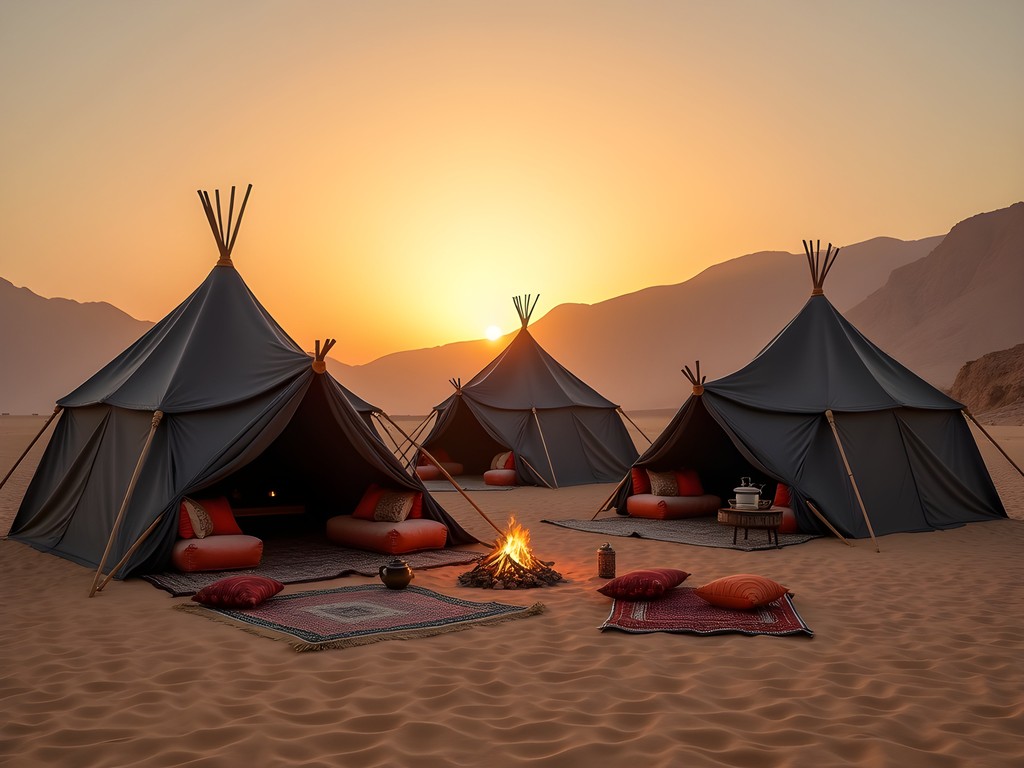
💡 Pro Tips
- Avoid tours that promise 'shows' or 'performances' as these tend to be less authentic
- Look for experiences limited to 10-15 people maximum
- Ask if your guide is actually Bedouin or just an operator
Desert Ecology Through Bedouin Eyes
As a marine biologist, I'm naturally drawn to ecosystems and how humans adapt to them. The Bedouin relationship with the desert parallels coastal communities' connection to the ocean—both have developed sophisticated knowledge systems to survive in challenging environments.
During a three-day trek with Mohammed, a Bedouin guide from the Muzeina tribe, I learned more about desert plant adaptations than in any academic paper I've read. Mohammed showed my friends and me how to identify medicinal plants like desert basil (habak) and wild sage, explaining their uses with the precision of a pharmacist. What impressed me most was his ability to find water in seemingly barren landscapes—knowledge passed down through generations.
The Bedouin understand microhabitats within the desert in ways that mirror marine species' adaptations to different reef zones. Their traditional ecological knowledge deserves recognition alongside formal scientific classifications.
For these desert excursions, I always carry my binoculars which have proven invaluable for spotting desert wildlife and examining distant geological formations. Their durability in sandy conditions has been impressive, and the clarity allows me to appreciate details I'd otherwise miss.
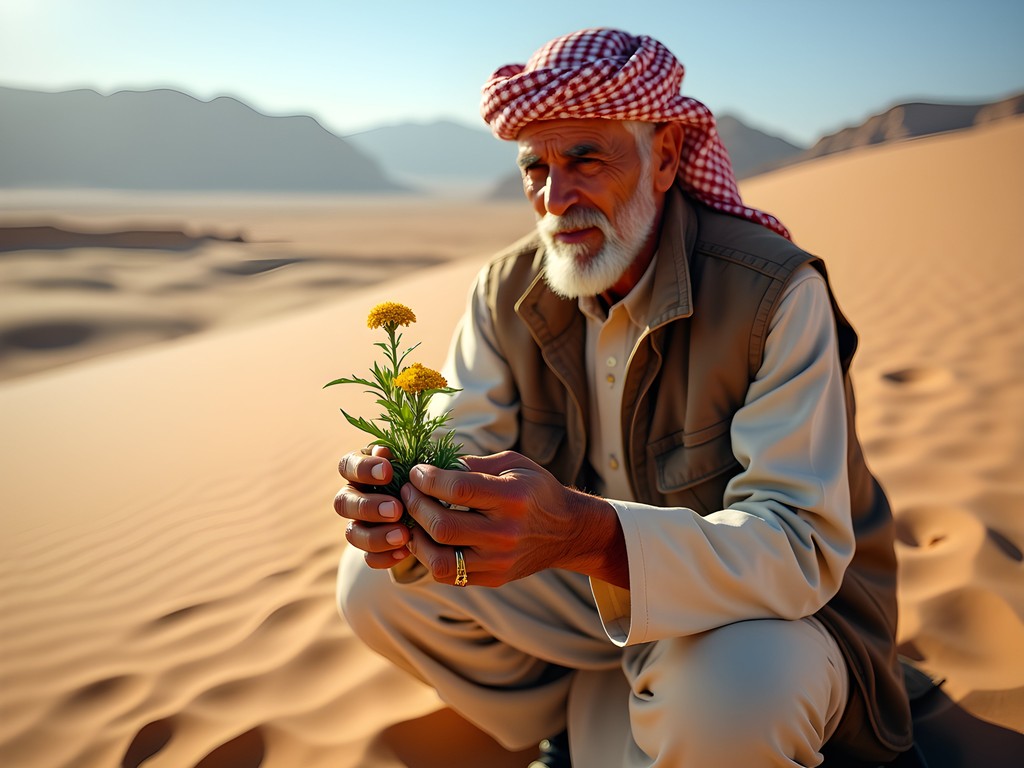
💡 Pro Tips
- Request guides who specialize in natural history if you're interested in desert ecology
- Bring a small notebook to record plant names and uses
- Early morning and late afternoon offer the best wildlife viewing opportunities
Family-Friendly Cultural Immersion
While I traveled solo on my first Bedouin experience, I've since returned with friends who brought their children, ages 8-14. Contrary to what many resort-bound families believe, authentic Bedouin experiences can be wonderfully enriching for children when properly arranged.
The key is finding the right balance between comfort and authenticity. A half-day visit to a Bedouin home in the settlements near Dahab or an overnight stay at a family camp provides enough immersion without overwhelming younger travelers. Children are naturally drawn to the hands-on activities: learning to bake bread in the sand, trying simple weaving techniques, or helping prepare traditional tea.
What struck me was how quickly the initial shyness between Bedouin and visiting children dissolved. Despite language barriers, they found common ground through games, music, and curiosity about each other's lives. These interactions often become the highlight of the trip—far more memorable than another day at the resort pool.
For families, I recommend bringing a polaroid camera to capture and share photos with your Bedouin hosts. Being able to leave printed photos with families who rarely have visitors is a meaningful gesture that creates lasting connections. Plus, watching the images develop seems magical to children from both cultures.
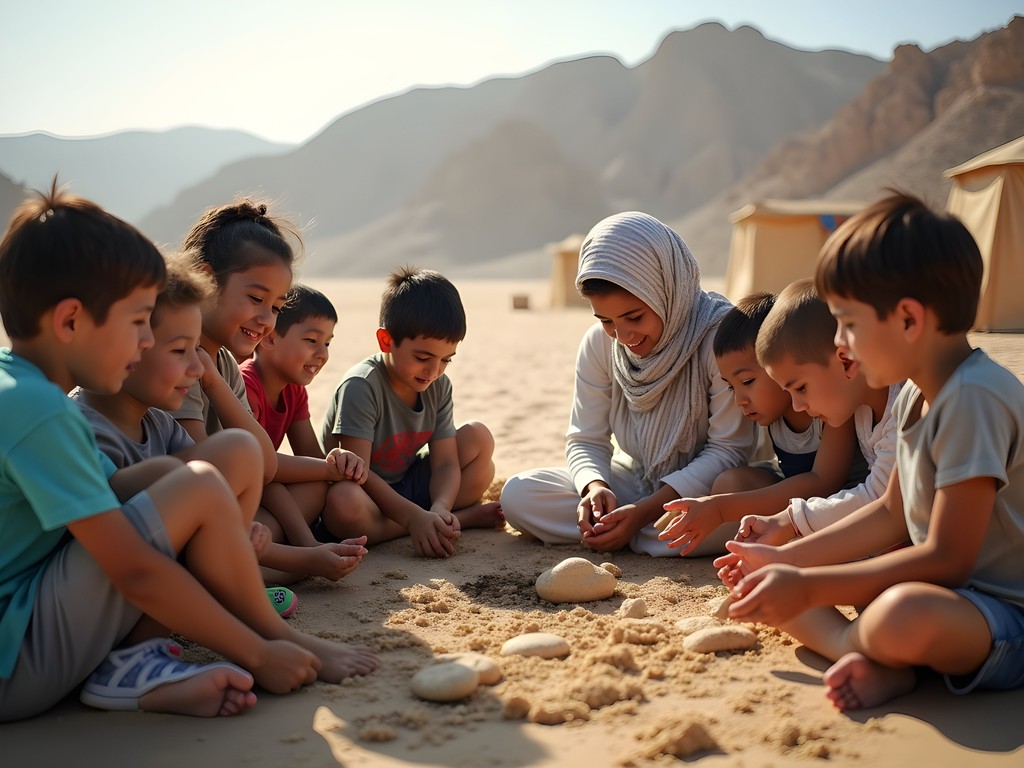
💡 Pro Tips
- Choose half-day experiences for families with children under 10
- Bring small, thoughtful gifts like colored pencils or solar-powered lights
- Learn a few Arabic greetings before your visit—children especially will appreciate your effort
Stargazing and Night Ecology in the Sinai
Growing up in light-polluted San Bernardino, I never truly saw the night sky until my first overnight in the Sinai Desert. The celestial display rivals any marine bioluminescence I've documented—a reminder that wonder exists in all environments, not just underwater.
For families and science enthusiasts alike, I highly recommend including a stargazing component in your Bedouin experience. The Sinai Desert offers some of the clearest night skies I've encountered, with visibility that astounds even experienced travelers. What makes stargazing here special isn't just the clarity but the cultural context—Bedouin guides share navigation techniques and star stories that blend astronomy with oral tradition.
During cooler months (October-April), temperatures drop significantly at night, making a insulated jacket essential for comfortable stargazing. I've found this packable layer perfect for desert evenings when temperatures can drop by 20°F after sunset.
Beyond stars, night walks reveal a desert transformed—nocturnal creatures emerge, plants release different scents, and the landscape takes on an ethereal quality. My background in biology helps me appreciate how desert species have evolved remarkable adaptations to function in this extreme environment, much like specialized deep-sea organisms.
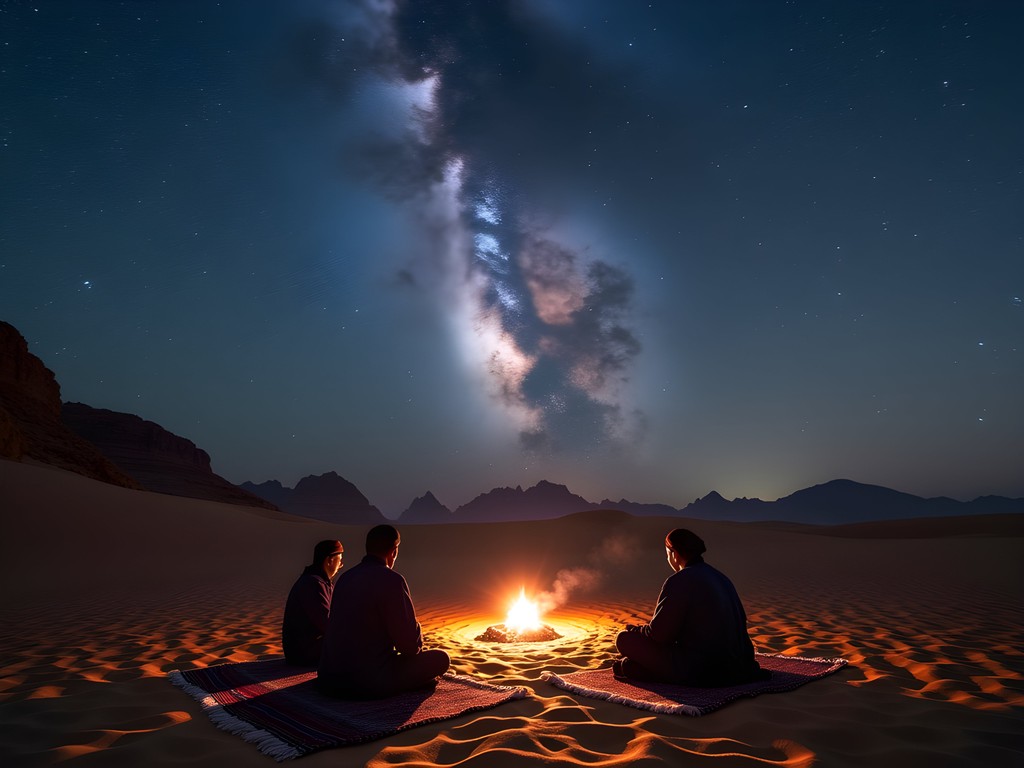
💡 Pro Tips
- Plan your visit around the new moon for optimal star visibility
- Allow your eyes at least 20 minutes to fully adjust to darkness
- Bring a star chart specific to the region or download a stargazing app you can use offline
Responsible Tourism: Supporting Authentic Bedouin Culture
My scientific training has taught me to observe without disturbing natural systems. The same principle applies when engaging with traditional cultures. The Bedouin way of life faces numerous challenges—from political marginalization to climate change impacts on their pastoral lifestyle. Tourism can either exacerbate these pressures or help preserve cultural practices through economic support and respectful exchange.
After multiple visits to the region, I've identified operators who prioritize ethical engagement with Bedouin communities. The best experiences involve fair compensation, cultural preservation efforts, and minimal environmental impact. I specifically seek out programs where Bedouin people maintain ownership and decision-making power rather than serving as employees of outside companies.
Photographing these experiences requires sensitivity. I always use my travel camera with a silent shooting mode to capture moments unobtrusively. Its compact size doesn't create the barrier that larger cameras do, allowing for more natural interactions while still producing professional-quality images that help me share these experiences authentically.
Before booking, ask pointed questions: What percentage of your fee goes directly to Bedouin families? Are traditional practices being modified for tourist comfort? How do you minimize environmental impact? The answers reveal much about the operator's approach to cultural responsibility.
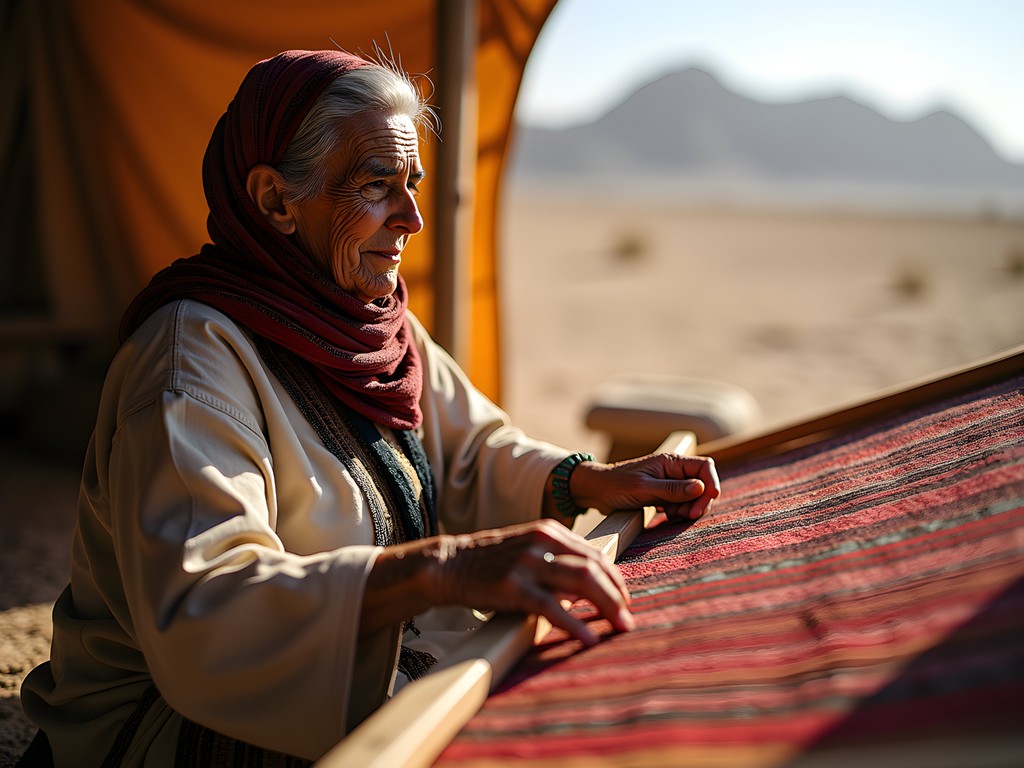
💡 Pro Tips
- Always ask permission before photographing people
- Purchase handicrafts directly from artisans rather than souvenir shops
- Consider carbon offsetting for your desert transportation
Final Thoughts
As a marine biologist, I've spent decades studying how organisms adapt to their environments. The Bedouin people of the Sinai represent one of humanity's most remarkable adaptations—a sustainable lifestyle in one of Earth's most challenging landscapes. Their knowledge systems, hospitality traditions, and cultural resilience deserve not just our tourist dollars but our genuine respect and protection.
When you venture beyond Sharm El Sheikh's resort boundaries, you'll discover that the true luxury of travel isn't found in five-star accommodations but in authentic human connections and environmental wisdom. My scientific background helps me appreciate the sophisticated ecological knowledge embedded in Bedouin traditions, while my traveler's heart treasures the moments of cross-cultural understanding that occur around a desert campfire.
I encourage you to approach your Sinai journey with both curiosity and responsibility. The memories you'll create—stargazing while sipping bitter Bedouin coffee, learning traditional crafts alongside local children, or simply walking silently through ancient wadis—will far outlast any standard resort experience. The desert, like the ocean, reveals its secrets only to those patient enough to look beyond the surface.
✨ Key Takeaways
- Choose small-group experiences run by actual Bedouin families for authenticity
- Plan at least one overnight stay to experience the desert's transformation from day to night
- Bring thoughtful items to enhance your experience: good binoculars, a headlamp, and layers for temperature changes
- Ask questions about sustainability practices before booking with any operator
- Prepare children in advance by explaining cultural differences and expectations
📋 Practical Information
Best Time to Visit
October to April (fall through spring)
Budget Estimate
$50-150 per person per day depending on experience type
Recommended Duration
3-7 days including resort stay
Difficulty Level
Moderate

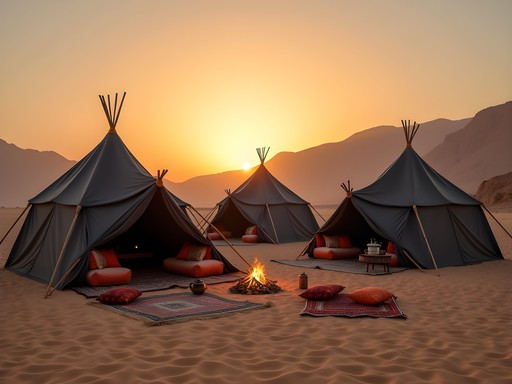
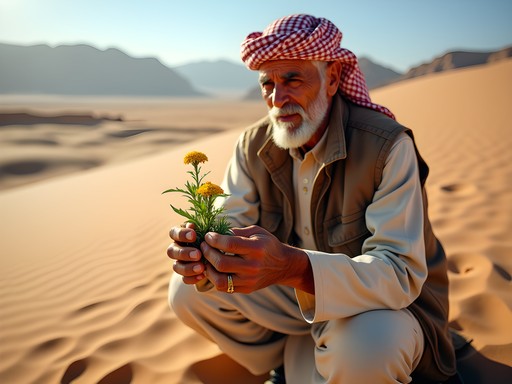

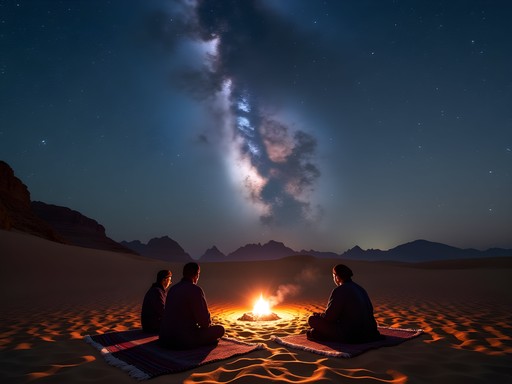
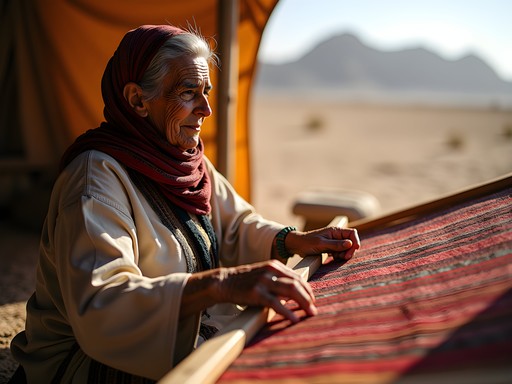


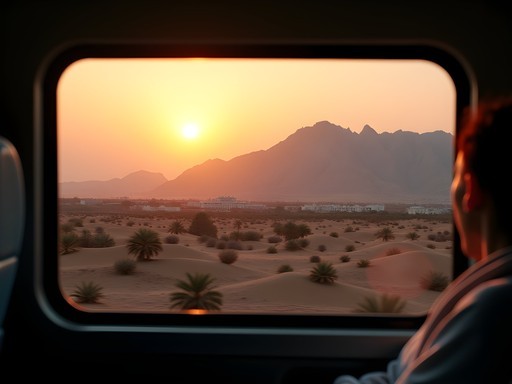
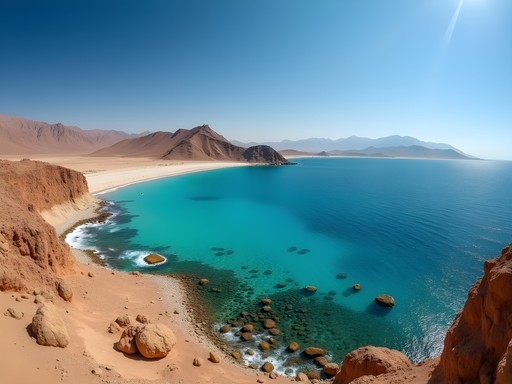






Comments
MarineLifeFan
As someone also interested in marine biology, did you find any interesting connections between the Bedouin knowledge of the desert and marine ecosystems?
Natalie Mason
Great question! Yes - the Bedouin elders had fascinating insights about seasonal patterns that affect both environments. They track certain desert plants blooming as indicators of what's happening in the marine ecosystem. There's a whole traditional calendar that connects desert, coast, and sea that I'm researching for a future article!
EgyptExplorer
Love how you went beyond the typical tourist experience! Those tea ceremonies look amazing.
travelphotographer
Those night sky photos are incredible! What camera settings did you use? Also, are these experiences suitable for families with kids (8 and 10 years old)?
Natalie Mason
Thank you! For the night shots I used a Sony Alpha with f/2.8, 20-second exposure, ISO 3200. And yes, absolutely family-friendly! The Bedouin communities are incredibly welcoming to children. My guide's kids joined us for the bread making and the camel rides. Your 8 and 10-year-olds would probably love the stargazing and learning about desert plants. Just bring a good headlamp for the evening activities - I used my headlamp which was perfect for the kids in our group too.
travelphotographer
Perfect, thanks for the detailed info! Will definitely look into booking something similar for our trip in November.
DesertLover85
We did the family experience with our kids last month and they're still talking about it! The bread making was definitely their favorite part.
Nicole Russell
Natalie, this post resonates so much with me! I visited Sharm last year but wish I'd read this before going. I did manage to do a desert safari, but it felt very commercialized. That stargazing experience you described sounds magical - especially the part about Bedouin astronomy knowledge. Did you find it difficult to arrange these more authentic experiences? I'm planning to return next spring and would love to connect with the same communities you mentioned. The contrast between resort life and traditional Bedouin culture is something I want to explore more deeply in my own content.
Natalie Mason
Thanks Nicole! It definitely takes some effort to find the authentic experiences. I recommend contacting Ahmed at the South Sinai Heritage Center - he helped arrange everything and ensured the communities directly benefited. I'll DM you his contact!
Nicole Russell
That would be amazing, thank you! Looking forward to the DM. 🙏
Sarah Powell
Natalie, your perspective as a marine biologist adds such a fascinating layer to this cultural experience! I visited the Sinai last spring and was struck by how the Bedouin ecological knowledge parallels modern conservation science in many ways. The tea ceremony you described with the medicinal herbs was a highlight for me too - our guide explained how they've sustainably harvested the same plants for generations. One thing I'd add for readers: the contrast between resort tourism and these authentic experiences is stark. I recommend spending at least one night in a Bedouin camp to truly disconnect from the resort bubble. The silence of the desert at dawn is something I still think about regularly. Did you find the transition between these two worlds jarring?
DesertDreamer55
The dawn silence is magical! We did a three-day trek last month and I'm still processing how different it felt from regular tourism.
TravelWithKids
Would you say these experiences are suitable for families with younger kids (8 and 10)? My children are fascinated by different cultures but I'm wondering if it might be too intense.
Sarah Powell
Absolutely! Many Bedouin guides are fantastic with children. The shorter half-day experiences would be perfect, and kids usually love the camel rides and learning about desert survival. Just bring plenty of water and sun protection!
wandernomad
This looks amazing! I'm planning a trip to Sharm El Sheikh in November but I'm a bit nervous about venturing outside the resort areas on my own. How safe would you say these experiences are for solo travelers?
Sarah Powell
I did several solo trips outside the resort areas last year and felt completely safe. The key is booking through reputable operators. I found that smaller, locally-owned tour companies provided more authentic experiences than the big hotel-affiliated ones. Most Bedouin hosts are incredibly hospitable and protective of their guests.
wandernomad
Thanks Sarah! That's really reassuring. Any specific operators you'd recommend?
Sarah Powell
Look up 'Sinai Trail' or 'Bedouin Ways' - both work with local Bedouin guides and have great safety records. I'd also recommend bringing a good headlamp for those stargazing experiences Natalie mentioned - the desert gets incredibly dark! I used my rechargeable headlamp which was perfect for navigating at night while keeping hands free.
Frank Garcia
Brilliant post highlighting the cultural aspects often overlooked in Sharm! As a backpacker who spent 3 weeks in the Sinai last year, I'd add that learning a few Arabic phrases goes a long way with the Bedouin communities. The ecological fragility of the desert environment you mentioned is spot on - I documented similar observations on my blog. For serious night photography of those amazing stars, I found my tripod essential as the desert winds can pick up unexpectedly. Did you make it to the less-visited wadis further inland? The rock formations there tell fascinating geological stories that complement the cultural narrative.
Natalie Mason
Thanks Frank! I did explore Wadi Gnai and Wadi El Gemal - both were incredible for geological features. You're absolutely right about learning basic Arabic phrases - it transformed my interactions from tourist transactions to genuine connections.
nomadninja
Those stargazing photos are incredible! The Milky Way looks unreal there.
greenninja
This looks amazing! I'm heading to Sharm next month with my kids (8 and 10). Are these Bedouin experiences suitable for families? Any specific tour operators you'd recommend that are respectful to both the culture and environment?
Natalie Mason
Absolutely suitable for families! Your kids will love it. I'd recommend Desert Eco Tours or Bedouin Nights - both employ local Bedouin guides and have family-friendly options. The camel rides and bread-making activities are usually big hits with children. Just bring plenty of water and sun protection!
greenninja
Thanks so much! Will definitely check those out. Did you find the night temperatures very cold? Wondering what to pack for the kids.
winterseeker
Not Natalie, but when I went with my nephew (9), the temperature dropped quite a bit at night. Definitely pack light jackets or sweaters for evening activities. The kids loved making sand art with the Bedouin guides!
winterseeker
This post brought back so many memories! I did a similar journey last year and the stargazing experience was absolutely magical. The Bedouin tea ceremony under those stars was one of the most peaceful moments of my life. Natalie, did you get to try the bread baked in the sand? That technique has been used for generations and the taste is unlike anything you can get in restaurants. The way you captured the ecological perspective really adds depth most travel blogs miss.
Natalie Mason
Yes! The sand-baked bread was incredible. I was amazed at how they've perfected cooking techniques using minimal resources. As a biologist, I found their sustainable practices fascinating - they've been practicing 'leave no trace' principles for centuries before it became a modern concept.
winterseeker
Exactly! Their relationship with the environment is so respectful. Did you get to learn about their medicinal plant knowledge too?
Venture X
Premium card with 2X miles, $300 travel credit, Priority Pass